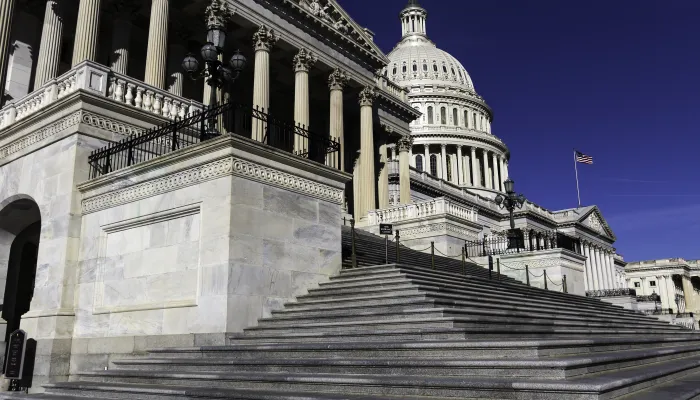What Will the Budget Look like in 2021?
In our continued analysis of the President’s budget, we now move to a detailed examination of what the budget, if enacted entirely and without future changes, would look like at the end of the 10-year cycle in 2021 and how it will change from today. Under President Obama’s proposal, spending would fall over the next few years before returning to an upward path, reaching to 23.1 percent of GDP in 2021, above the historical average of less than 21 percent but below the current level of about 25.3 percent GDP in 2011.
Not only will overall levels of spending be notably different, but the composition of outlays will shift as the population ages, health care costs continue to rise, and the debt continues to grow.
Between now and 2021, in light of the anticipated economic recovery, spending on countercyclical programs is expected to decline substantially. As a result of this and declining war spending, non-base discretionary spending (war and stimulus spending) will fall from 6 percent of the budget today to less than 1 percent in 2021. And spending on income support -- much of which goes to unemployment and food stamps -- will fall from 8 percent of the budget to 4 percent.
Base discretionary spending will also decline as a share of the budget, as a result of the President's five-year non-security discretionary freeze and his limits on defense spending to keep its growth in line with inflation. Because inflation grows slower than the economy -- but most mandatory programs grow faster than the economy -- base discretionary spending will decline form 37 percent of the budget today to 24 percent in 2021. The non-security portion will drop from 11 percent to 8 percent.
Social Security spending will increase as a share of the budget -- from 19 to 22 -- as the population ages and the baby boomers begin to enter retirement. Medicare spending will also grow -- from 13 to 15 -- due to a combination of population aging and rapid health care cost growth. However, this growth is moderated substantially by the changes enacted under the Affordable Care Act (ACA). The ACA included a number of policy changes that would significantly reduce the level of Medicare spending (reduced Medicare Advantage subsidies, provider payment cuts, etc), along with one major change -- a reduction in provider payment adjustments -- which will effect the growth rate. It is important to note, though, that in 2012 and beyond the budget shows the "doc fix"--the waiving of scheduled reductions in Medicare payments to physicians--fully paid for. However, as we've commented before, the budget simply "assumes" that these costs will fully paid for after 2012 while only showing specifics on how to pay for two years of the doc fix. That's not the honest budgeting that we were hoping for.
Yet while ACA helped to slow the growth of Medicare, it will lead to a substantial increase in health care spending for low income individuals. Today, Medicaid, SCHIP, and related programs account for 1.8 percent of GDP. This is up from 1.4 percent in 2007 due to a temporary spike resulting from the recession. But as ACA expands Medicaid and institutes new insurance subsidies, and health care cost growth (plus population aging) puts further pressure on Medicaid, means-tested health spending will grow to 2.4 percent of GDP.
And yet, this is not the fastest growing portion of the budget -- that honor goes to interest payments on our accumulating debt. As public debt climbs from about $10.9 trillion to $19 trillion by 2021 under the President's proposals, interest spending to service that debt will more than double. This trend will not subside so long as our debt continues to increase. Interest payments will continue to consume a larger and larger proportion of our budget we do not bring deficits to sustainable levels.
By themselves, entitlement spending and interest will equal 76 percent of the budget, up from 63 percent in 2011. If that's not a loss of budget flexibility, we don't know what is.
| President's Budget | FY 2007 | FY 2011 | FY 2021 | |||
| % GDP | % Budget | % GDP | % Budget | % GDP | % Budget | |
| Base Security Discretionary | 3.3 | 16% | 4.9 | 20% | 3.6 | 16% |
| Base Non-Security Discretionary | 3.3 | 16% | 2.9 | 11% | 1.8 | 8% |
|
War and Stimulus Spending |
1.2 | 6% | 1.5 | 6% | 0.2 | 1% |
| Sub-Total, Discretionary | 7.8 |
39% | 9.3 | 37% |
5.5 | 24% |
| Social Security | 4.2 | 21% | 4.9 | 19% | 5.1 | 22% |
| Medicare | 2.7 | 13% | 3.2 | 13% | 3.4 | 15% |
| Medicaid, Exchange Subsidies, and Related Spending | 1.4 | 7% | 1.8 | 7% | 2.4 | 11% |
| Income Support* | 1.0 | 5% | 2.0 | 8% | 1.0 | 4% |
| Other Spending | 1.3 | 7% | 2.6 | 10% | 3. | 9% |
| Sub-Total, Mandatory | 10.6 | 53% | 14.5 | 57% | 14.1 | 61% |
| Net Interest | 1.7 | 9% | 1.4 | 5% | 3.4 | 15% |
| Total | 20.2 | 100% | 25.3 | 100% | 23.1 | 100% |
*Estimates based OMB data for unemployment benefits, food and nutrition assistance, supplement security income, and temporary assistance to needy families.
The budget will become increasingly focused on health care spending and interest on the debt past 2021, likely crowding out other critical investments for the future such as education and infrastructure. We've got to take a hard look at all our spending (and tax) programs to get this country back on a sustainable course.

